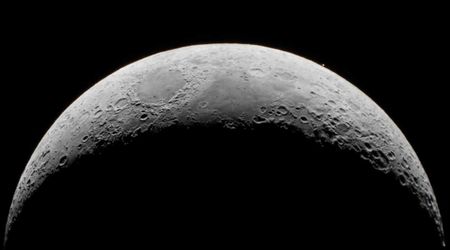NASA expert's response to claims that Earth is flat is simple yet compelling

For centuries, the reality of Earth being a sphere has been proved by a treasure trove of facts and demonstrations. Despite this array of scientific conclusions, the flat-earthers consider this a mere mainstream theory and believe our planet has ends. Further explaining the reality of the spherical planet, NASA asked an expert how we knew that Earth is not flat. Dr. James Garvin, an Earth and Planetary scientist, said that this began with the Greeks and the Egyptians, who witnessed the motion of the stars and the movement of the sun.

They saw the various angles of the shadows at different times and places. This led them to assume that the Earth was round, a theory that was carried down to the sailors and seafarers. They set out to explore the extent of our planet, and the spherical shape was made clear by their travels. The mariners orbited the Earth by sea and were able to depart from one point through one ocean and arrive through another. If the planet had indeed been flat, they would have fallen off the edge. These explorations produced intricate maps and the discovery of various locations.

From seafarers and mariners, the dawn of space exploration occurred in the 50z and 60s. This was made possible by huge steps in science, technology, and innovation. Humans became brave enough to step into the unknown and explore further than we could reach. Once we arrived in space, we were able to witness that our home planet was “a gorgeous round object.” This was an exceptional moment for us as it put us and our world in the context of the space and solar system. We found that we had “a big round Sun and a beautiful round Earth and a round Mars.”

There is, in fact, no other discipline on the planet that has had more experiments, observations, and demonstrations done on than the curvature of Earth. The most basic knowledge of this can be tracked with the horizon, as per Space.com. As an object moves away from you, it disappears in a very specific pattern of recession. The same applies to when an object moves towards you; it comes into the line of vision in a specific direction. The division of the hemispheres, the rising and setting of the sun, and even the view of the polar star can only be explained by the planet being round.

Garvin further explained how this “roundness” was used by experts in methods of space geodesy to understand more about the universe. It helps us learn where we are presently to where we are going to be. “I haven’t been lost in years. That’s pretty good,” he stated. This knowledge could also be used to record various natural phenomena related to our oceans and celestial aspects. This basic ‘pulse of our planet’ could be used in consideration of extraterrestrial worlds that were yet to be explored. This was tied by the expert to NASA’s future mission to go back to the moon.
He urged the viewers to embrace the idea of why our planet is not flat as we head out to explore new worlds. The debate between round-earthers and flat-earthers is an old problem, though with an obvious solution. Thousands of images of Earth taken by satellites and astronauts confirm the roundness. Multiple space agencies, including NASA, ESA, and private companies like SpaceX, are putting this conspiracy to bed. However, a community of conspiracy theorists has yet to believe this reality.
























